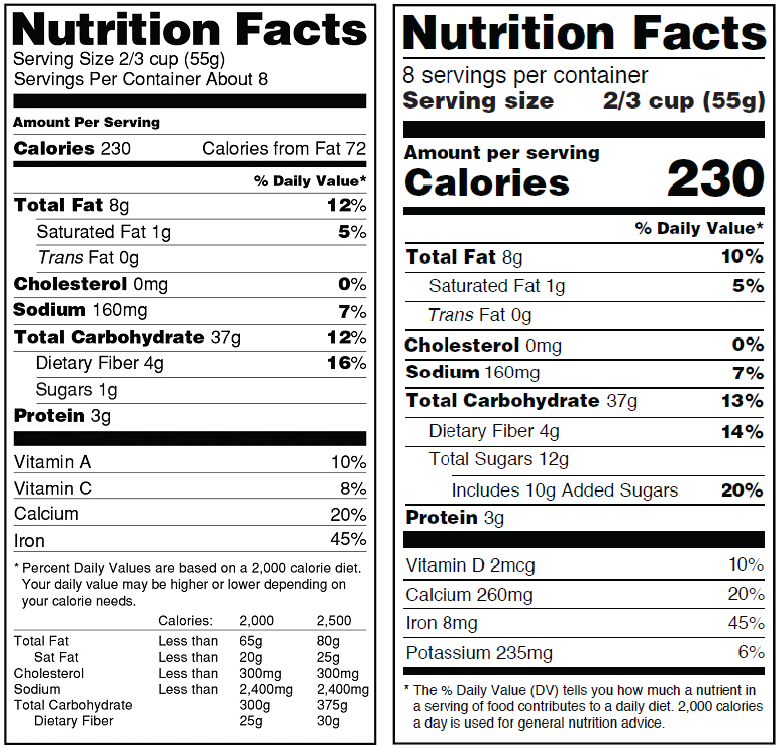As a nutritionist and a diabetes expert, I am very pleased that the Food and Drug Administration (FDA) is making a welcomed change to the nutrition facts label. Some companies have already started implementing the changes, so now is a good time to point out what’s new and improved on the label. I’ve highlighted some of the major changes below.
Serving Size
Finally, it will be more reflective of what is typically consumed as a portion. Keep in mind that it is not meant to recommend a larger serving, but to be more accurate with what most people actually eat or drink. A small bottle of iced tea may tout “60 calories per serving” on the front and you may not realize the company considers the bottle 2-3 servings and you are really consuming 150 calories! The bottle will now have to be considered one serving and give the nutrient content per the whole bottle.
Calories Per Serving
The font will be larger and easier to read. This will allow for people to grab a product and more easily see this important piece of information.
Total Fat
“Calories from fat” will be gone as the type of fat is more important than the amount of fat (i.e. saturated versus unsaturated fat). Some very healthy foods, such as olives or walnuts, are high in fat and rather than focus on the calories from fat, you will look further down the label at the total fat grams and whether those come from saturated and trans fats (unhealthy) or unsaturated fat (healthier fat).
Added Sugars
This is the best improvement in my opinion. You can now see how much sugar a company adds during processing and this is what we dietitians like to call “added sugar”. Sugars are often added to foods in many forms and in higher amounts than people realize. Added sugars differ from those that occur naturally in foods like fructose and sucrose in fruit, or lactose in milk products. White sugar, honey, and high fructose corn syrup (along with many other forms of added sugars) will soon be distinguishable from naturally occurring sugars. This puts helpful nutrition information into the hands of consumers enabling them to choose the most healthful natural foods over those with added sugars.
Nutrient Information
Vitamin D and Potassium have been added to the revised nutrition facts label because of low intakes. In the U.S. today, many adults are found to be deficient in Vitamin D. Another new feature is that all nutrients will now be listed in gram amounts. Additionally, Vitamins A and C have been removed as deficiency in these areas is no longer a concern.
The initial deadline for label changes for larger companies was mid-2018 with smaller companies having an additional year to make changes to their labels. The compliance deadline now has been extended and the exact date has not been determined. Some companies have already started implementing the changes so start looking out for the new labels and the improved healthful information that will be soon at your fingertips!
In good health,
Caroline
